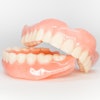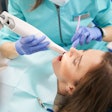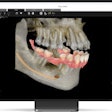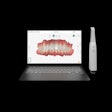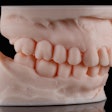Researchers have developed a noninvasive ultrasound method for gum disease screening designed to be more reliable and comfortable than manual periodontal probing, according to a press release from the American Chemical Society.
The toothbrush-shaped ultrasound device operates at a high frequency and generates high-resolution images of the teeth and gums, according to the release dated June 6.
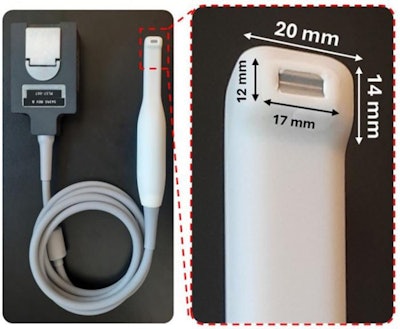 The toothbrush-shaped ultrasound transducer (left image) features a small head size (right image), allowing easy access to premolars and molars in the back of the mouth.Adapted from ACS Sensors 2025, DOI: 10.1021/acssensors.5c00521.
The toothbrush-shaped ultrasound transducer (left image) features a small head size (right image), allowing easy access to premolars and molars in the back of the mouth.Adapted from ACS Sensors 2025, DOI: 10.1021/acssensors.5c00521.
“We designed this tool to meet the realities of clinical dentistry -- it is miniaturized, accurate and easy to use,” Jesse Jokerst, PhD, a professor at the University of California, San Diego Jacobs School of Engineering and lead author of the study, said in the release.
Ultrasound works by sending sound waves into the body, which bounce off structures like gum tissue or teeth and are then detected by a transducer. The transducer converts these reflected waves into images. However, traditional ultrasound transducers are too large to fit comfortably inside the mouth.
While smaller versions exist, they operate at lower frequencies and produce lower-resolution images. To solve this, the research team developed a much smaller, toothbrush-shaped transducer that operates at higher frequencies and creates clearer images of the teeth and gums, according to the release.
The researchers tested the device by measuring gum thickness and height on pig teeth and then compared the results to measurements taken with a manual periodontal probe. The two sets of results were statistically similar, supporting the ultrasound tool as a reliable and less invasive way to assess gum health.
“Future work will use this device with patients to image below the gumline, where we will monitor treatments and diagnose earlier to reduce dental pain and help patients keep a healthy smile," Jokerst said.




